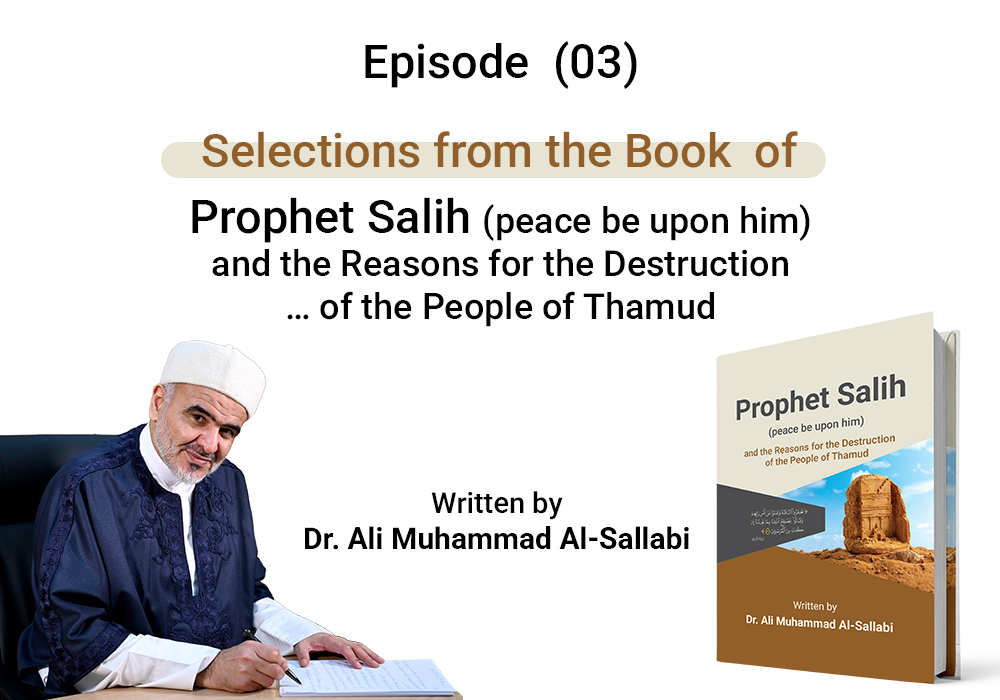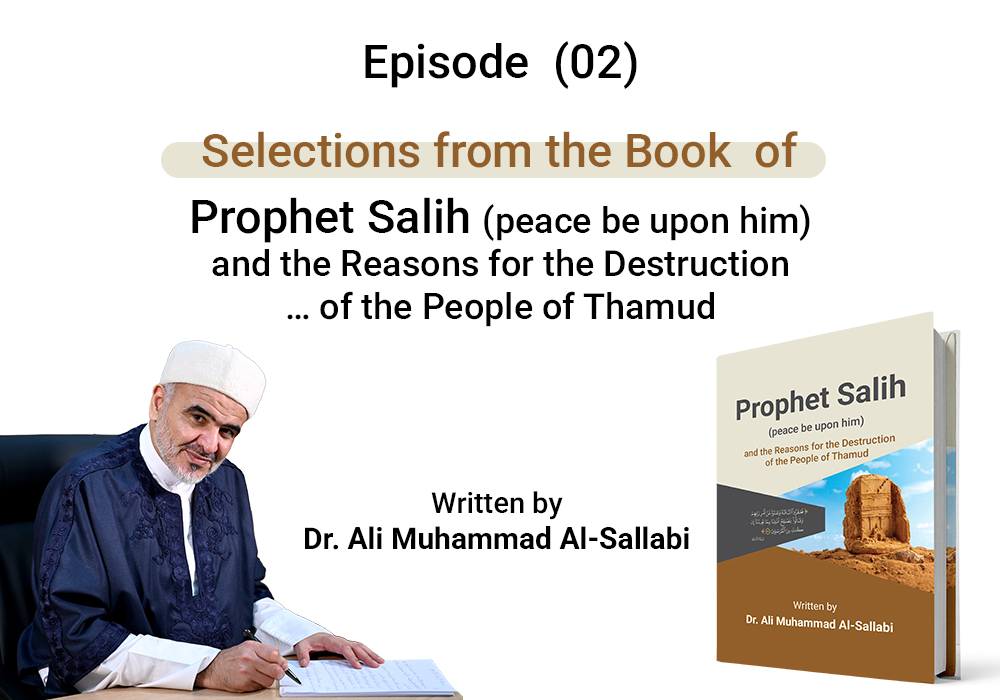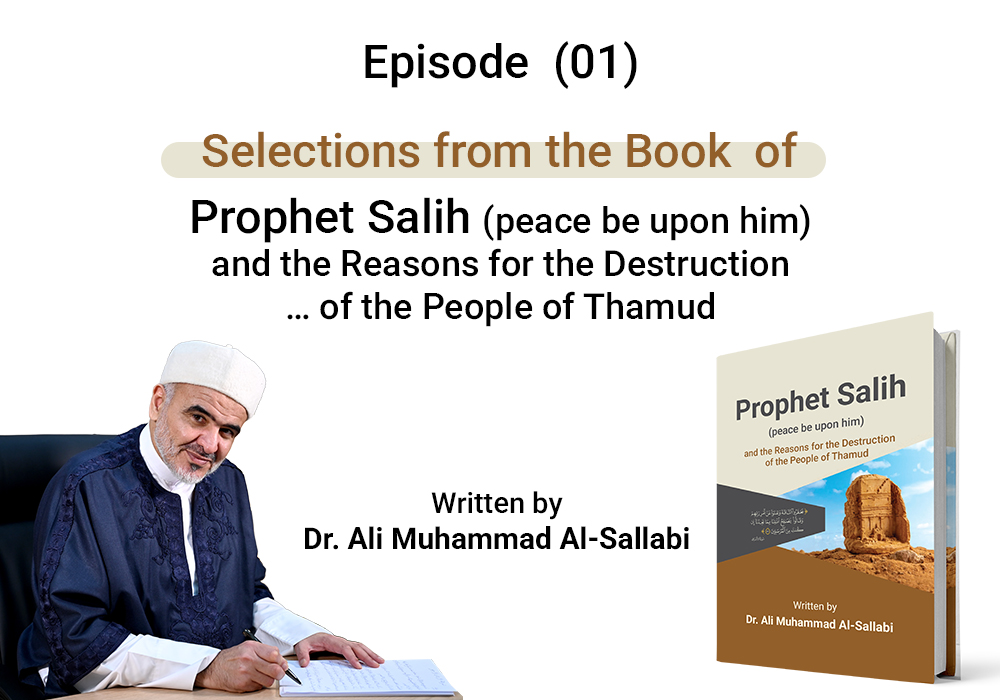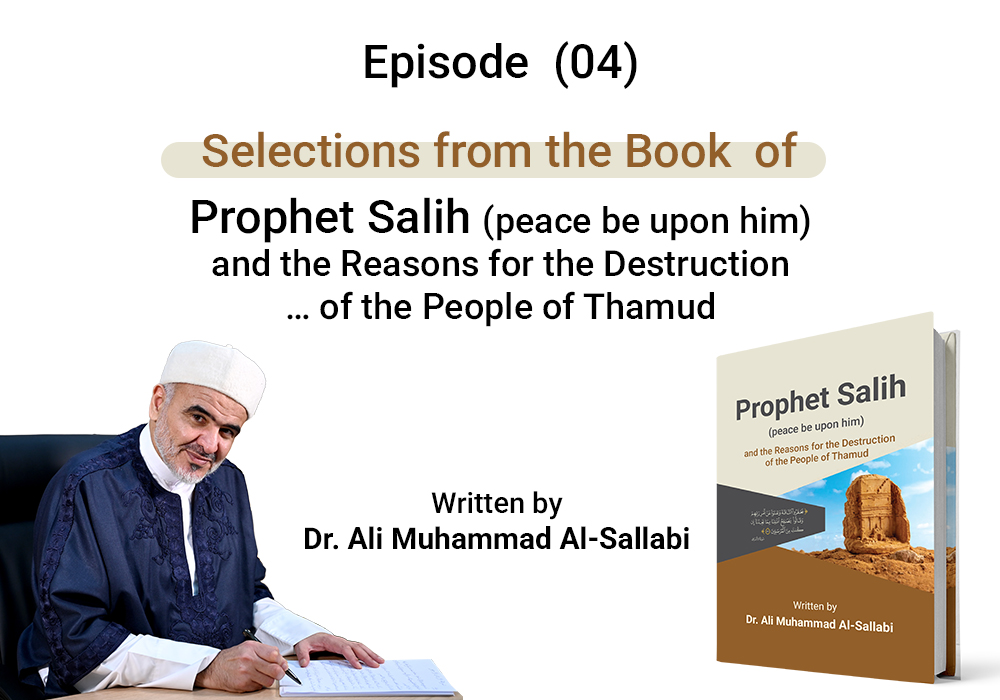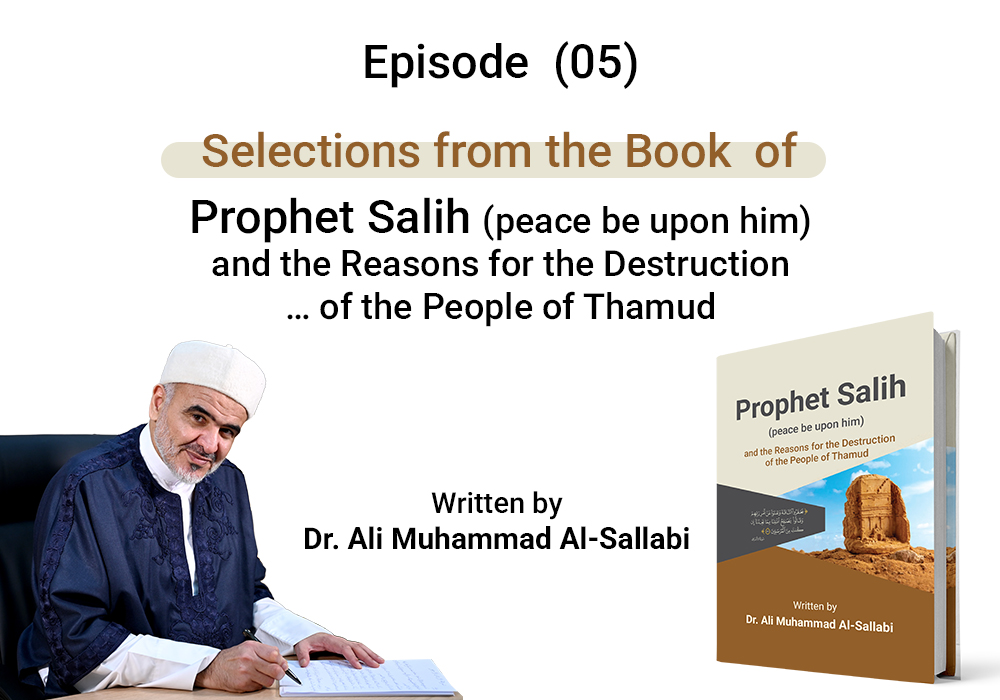The Dwellings of Thamud
Selections from the Book Prophet Salih (peace be upon him) and the Reasons for the Destruction of the People of Thamud …
Written by Dr. Ali Muhammad al-Sallabi...
Episode (03)
The Thamud people inhabited the western and northern parts of the Arabian Peninsula, which was known in that time as Wadi al-Qura, due to the presence of villages scattered along the entire length of the valley. Muslim geographers have discovered the ruins of these villages, and their stone remains are still visible today.
The capital of the Thamud lands was "al-Hijr," which was located along the ancient road connecting Hijaz to the Levant. Another Thamudite city along this same road was (Fajj al-Naqah). However, the true city was al-Hijr, which is now called Mada'in Salih.
The Holy Quran mentions the location of the Thamud people in several verses. Allah Almighty says: {And [with] Thamud, who carved out the rocks in the valley?} [Al-Fajr: 9]. Al-Samin al-Halabi explained the word "carved out" here as "cutting the ground," referring to a low-lying area or valley. The verse means that the Thamud carved the rocks in the valley and made homes from them.
This verse indicates that the Thamud lived in a rocky region in one of the valleys and carved the rocks to create homes and shelters for themselves.
Another verse in the Holy Quran says: {And certainly did the companions of al-Hijr [i.e., the Thamud] deny the messengers. (80) And We gave them Our signs, but from them they were turning away. (81) And they used to carve from the mountains, houses, feeling secure. (82)} [Al-Hijr: 80-82]. In this passage, the people of Thamud are referred to as "the companions of al-Hijr". The verse describes how they lived in the rocky mountainous region of al-Hijr and carved homes from the mountains to live in safety.
This suggests that the rocks in that region were soft enough to carve, allowing the Thamud to easily cut the mountains and create their homes. It also indicates their skill in carving and their advanced knowledge of artistic, engineering, and architectural design.
The region of al-Hijr, where the Thamud people lived, is located in the northwest of Hijaz, on the ancient road that connected Medina (peace be upon its inhabitants) to Tabuk.
During his journey from Medina to Tabuk, the Prophet Muhammad (peace and blessings be upon him) passed through the area of al-Hijr. Abdullah ibn Umar (may Allah be pleased with him) narrated in a hadith found in both Sahih al-Bukhari and Sahih Muslim that when the Prophet (peace and blessings be upon him) and his companions arrived at Tabuk, they camped at al-Hijr, near the homes of the Thamud people. The companions used the water from the wells that Thamud had used, kneaded dough from it, and cooked in pots. The Prophet (peace and blessings be upon him) ordered them to pour out the contents of the pots, feed the camels with the dough, and then move on. He also forbade them from entering the ruins of the people who had been punished, saying: “Do not enter the ruined dwellings of those who were unjust to themselves unless (you enter) weeping, lest you should suffer the same punishment as was inflicted upon them.”
This narration from Abdullah ibn Umar (may Allah be pleased with him) confirms that the Thamud people lived in al-Hijr, which is the same location mentioned in the Holy Quran. The region is situated on the road between Medina and Tabuk. The hadith also references the well that the she-camel of Prophet Salih (peace be upon him) drank from, and that this well still existed at the time of the Prophet (peace and blessings be upon him), with its water available for the companions to drink.
The area of al-Hijr is also known in Islamic history as Al-Ula, as mentioned by Yaqut in his Mu'jam al-Buldan, where he states: "Al-Ula: with a damma on the first letter and short vowels; it is a place near Wadi al-Qura between it and Syria, where the Prophet (peace and blessings be upon him) camped during his journey to Tabuk."
The area of al-Ula retains this name to this day, and it is home to the archaeological site known as Madain Salih, named after Prophet Salih (peace be upon him). The ruins of the Thamud people are still present in the region, with some of their houses carved into the rocks and mountains. Many who have seen the Thamudite ruins in Madain Salih report that the craftsmanship and beauty of these homes surpass those of the Nabateans in Petra, Jordan, due to their intricate and skillful carving of the stones and mountains.
- Ali Muhammad al-Sallabi, Prophet Salih (peace be upon him) and the Reasons for the Destruction of the People of Thamud, pp. 26-30.
- History of the Land of the Quran, p. 190.
- Quranic Stories (1/272).
- The Pillar of the Preservers in the Interpretation of the Most Noble Words, Abu al-Abbas, Shihab al-Din, Ahmad bin Yusuf bin Abd al-Da’im, known as al-Sam’in al-Halabi, Dar al-Kutub al-Ilmiyyah, 1st ed., 1996 AD (1/410).
- Sahih Al-Bukhari, Dar Ibn Kathir, Muhammad bin Ismail, Al-Bukhari, Damascus, Beirut, Fourth Edition, 1422 AH - 2002 AD, No. (3378); Muslim, No. (2981).
- Dictionary of Countries, Yaqut al-Hamawi (4/244).
For further information and review of the sources for the article, see:
The Book of Prophet Salih (peace be upon him) and the Reasons for the Destruction of the People of Thamud on the official website of Sheikh Dr. Ali Muhammad al-Sallabi:


